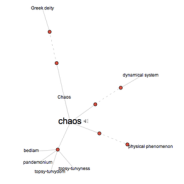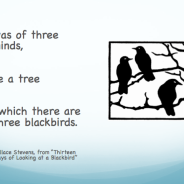Posted by Diane Morrow on January 14, 2007 in A Different Perspective, Healing Images, Healing Poetry
Three times in the last month I have come across, in three different places, the poem, “Wild Geese,” by Mary Oliver. After the third time, I thought this might be a poem I ought to pay some attention to. The poem opens with the speaker telling us, her reader, that we do not have to be good, we do not have to walk on our knees for a hundred miles through the desert, repenting. And, then, this line: “You only have to let the soft animal of your body love what it loves.” It’s a radical line. Maybe a radical poem. It goes against the grain of business as usual. The way the mind and the will are so often, for so many of us, yanking the body around to places it doesn’t really want to go—places even, sometimes, that can make the body a tad sick—or sicker. And sometimes maybe this is one of those silver linings of getting sick—or so people will sometimes tell me—the small good part—how a person can begin to learn to quit yanking the body around. The stakes are too high anymore to do all that yanking. Sometimes illness is the beginning, for some people, or so they tell me, of beginning to pay closer attention to what the body loves and needs—and what it doesn’t. I’ve been carrying the poem with me this month, looking at it now and then, and now, today, there’s one particular word that seems to jump off the page: meanwhile. MEANWHILE as the good part? Because after the speaker of the poem tells us we do not have to be good, we do not have to walk on our knees for a hundred miles, repenting, we only have to let the soft animal of our body love what it loves, after that she invites us, the reader, to tell her of our despair and she will tell us hers— And then there’s this shift—this leap—and she writes: Meanwhile the world goes on. Meanwhile the sun and the clear pebbles of the rain are moving across the landscapes. . . Meanwhile the wild geese, high in the clean blue air, are heading home again. . . It’s as if the camera had been close in—a history of despair—or a history with some despair in it–but then—a shift—the camera pulls back—a shift to a larger landscape—a leap—meanwhile—somewhere—those wild geese, high in the clean blue air, are heading...
read more


